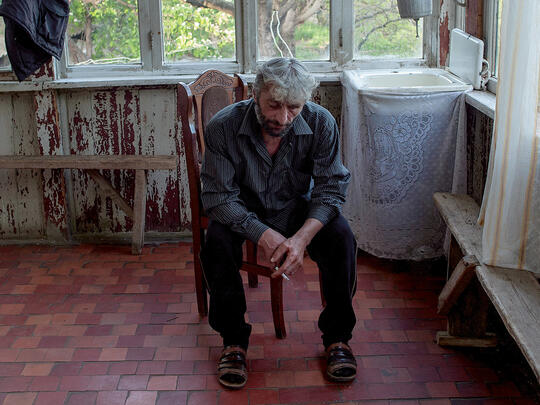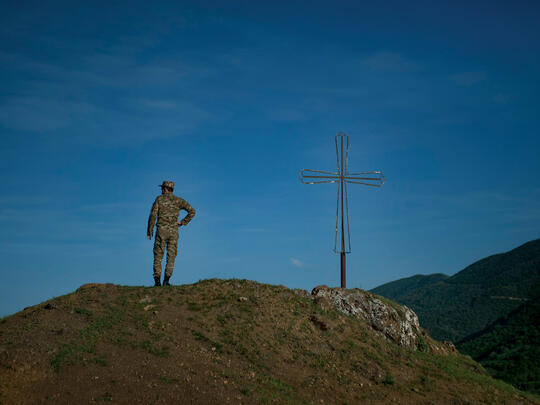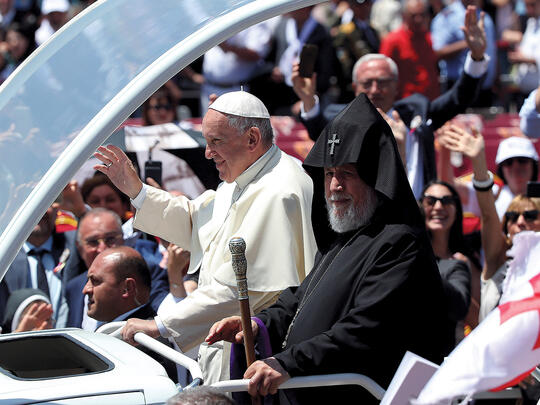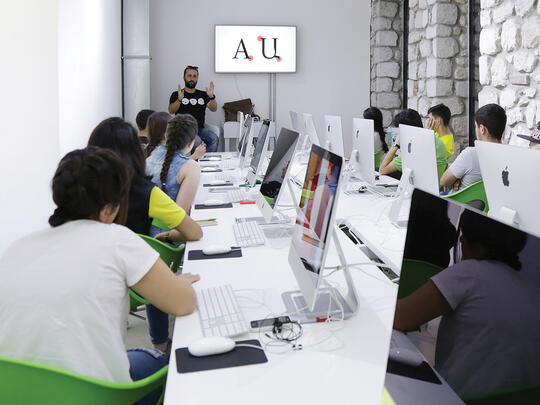When AGBU Marseille chair and film director Patrick Malakian visited Armenia at the end of 2014 searching for young performance artists for a program dedicated to the centenary of the Armenian Genocide, he had no idea what kind of talented youngsters he would find in the rehearsal classrooms at one of the AGBU Children’s Centers.
Arriving at the Children’s Center in the Nork neighborhood of Yerevan, Malakian sat as the lone audience member in a 400-seat theater. The choreographed performance of singing, acting, dancing and circus acts left him stunned.
“I can’t say I cried all the way through, but they made me cry many times,” Malakian recounted. “And at the end of the show, there were something like 98 children on stage. I went: ‘That’s it, this is it! I want to take you all to Marseille!”
Although Malakian was aware that the Children’s Centers were one of AGBU’s many projects in Armenia, what he—and perhaps others in the diaspora—did not realize was the positive impact that the facilities have had on children in the post-Soviet era.
The AGBU Children’s Centers began in February 1993 when the organization, in partnership with the Mother See of Holy Etchmiadzin, acquired and transformed Yerevan’s former Soviet youth palaces into three updated facilities.
Those centers, located in the Nork, Arapkir and Malatya suburbs of Yerevan, provide a range of after school instruction and summer programs for children and young adults.
Over the years, two more Children’s Centers opened in the city of Vanadzor and at Holy Etchmiadzin. After 23 years, the centers act as a second home for nearly 2,000 children and young adults, ages four to 25.
Students gather in classrooms every day afterschool to take advantage of a wide spectrum of enriching programs, including arts and crafts, computers, dance, circus arts, history, sports, music, religious studies and the performing arts. The Nork facility also teaches classes during the summer.
“The important thing is that it needs to be a continual process because young children are very receptive at those ages,” said Artur Gevorgyan, a teacher at the Nork Children’s Center. “The students are present in a supportive atmosphere where they interact with their peers.”
Overseen by an administrative staff of over 175 and administered by the Mother See of Holy Etchmiadzin, the AGBU Children’s Centers aim to nurture every student who walks through the facilities’ doors creatively, physically and spiritually.
Gevorgyan’s teaching expertise focuses on the sports side: judo. He instructs 50 boys ranging in age from seven to 18, divided into three groups based on age. He says his students benefit from the physical activity, especially those who must join the army for compulsory service.
But not only is his students’ physical fitness advanced by attending classes, the youngsters’ skilled training allows them to be competitive in tournaments.
According to Gevorgyan, the Nork Children’s Center competitors won four gold medals last year at Armenia’s National Judo Championship.
But the endgame is not about how many medals Gevorgyan’s students win at a competition. It is about the positive recognition the students can bring to all involved at the Children’s Centers as well as about building self-esteem and encouraging discipline that will serve them well outside the centers, too.
“This year, we had a judo student who became the Armenian champion and we are hopeful that next year he can win a European championship and perhaps even a world championship,” said a humble Gevorgyan. “This is important because we train our students to become ready to represent all the Children’s Centers.”
The Children’s Center staff’s work has not gone unnoticed. In 2014, Yerevan Mayor Taron Margaryan recognized the Nork Children’s Center staff, awarding them with the Yerevan Gold Medal for their tireless contribution to the children in the Armenian capital.
National and international recognition is not just limited to sports students, as the Children’s Centers performing and visual arts students have also earned their fair share of recognition.
Many students in performing arts, circus acts and visual arts have gone on to win various competitions around the world.
In 2007, a Nork Children’s Center student won the top prize in the International Children’s Art Competition, organized by the United Nations Department of Economic and Social Affairs in collaboration with the Department of Public Information (DPI) and United Nations Postal Administration.
In 2012 and 2013, performing arts students participated in the Junior Eurovision Contest, the Pomegranate Seed Republican Theatrical Festival, the Delphi International Games and the International Children’s Games. In November 2014, three circus act students were featured during the Junior Eurovision Song Contest in Malta.
The Centers’ performance troupes have traveled extensively around the world, including to Brazil, Canada, Georgia, Poland, Russia, Uruguay and the United States, where they have drawn standing ovations from tens of thousands of admiring spectators.
One of the more recent thunderous receptions came from the south of France.
When Malakian brought over 50 Children’s Centers performers to Marseille in November 2015, he knew he would be shocking an audience that was probably expecting the usual display of classical Armenian stage performance numbers performed by school-age children.
“There is one thing you have to understand: Everybody that came to our show…thought they were going to see a kind of end-of-the-year school show,” he explained. Instead the troupe’s show titled “Éternels” dazzled the 1,200-seat Palais des Congrès theater with a performance of dancing, singing, acting, acrobatics and circus work, telling the story of Armenian history from Noah’s Ark to the 21st century.
“The level of those kids is professional,” Malakian added. “That is something that when everybody came out they reacted, ‘Oh my God, we did not expect that.’”
The show’s timing also had an emotional impact on the audience and the Children’s Center performers. Just days after arriving, the terrorist attacks that rocked Paris—including the tragedy at the Bataclan theatre—could have cast a damper on the show. But Malakian said the children’s parents in Yerevan supported letting their kids perform in Marseille, providing not only an escape for the community, but a memorable show not soon to be forgotten. “[The children] all came here for one week and we had an incredible week together,” said Malakian, trying to capture the right words to justify the emotion felt at the performance. “At the end of the show, everybody—and when I say everybody, I’m not talking about the artists, I’m talking about the audience—was in tears. This was one of the most incredible, human emotions I’ve witnessed in my career as a director.”
Malakian is working with the Children’s Centers performing arts students once again, serving as the artistic director of “Hokis,” which will debut during the AGBU 89th General Assembly Weekend in New York in October. The performance will be a collaborative effort with students from the TUMO Center for Creative Technologies, AGBU global alumni and AGBU Performing Arts Scholarship recipients.
As for the Children’s Centers, Malakian dreams of them becoming a well-known “symbol of excellence” for the teaching of performing arts and athletics, similar to how TUMO is now a symbol of excellence for youth and technology.
He is working with the centers to help them evolve to a place where they can offer more specialized classes in performance arts and offer opportunities for students to perform and work in world-class troupes and institutions around the world.
With proper time, effort and care, Malakian truly believes the Children’s Centers can become a point of pride and international centers of renown.
“I love the Children’s Centers. I think it is a very good program and it is gold. But it is rough gold that now needs to be taken care of in order to really do [the children] justice…Now it is time to show it to everybody. And when I say everybody, I mean not just Armenians around the world but beyond Armenians, because there is talent everywhere.”


















